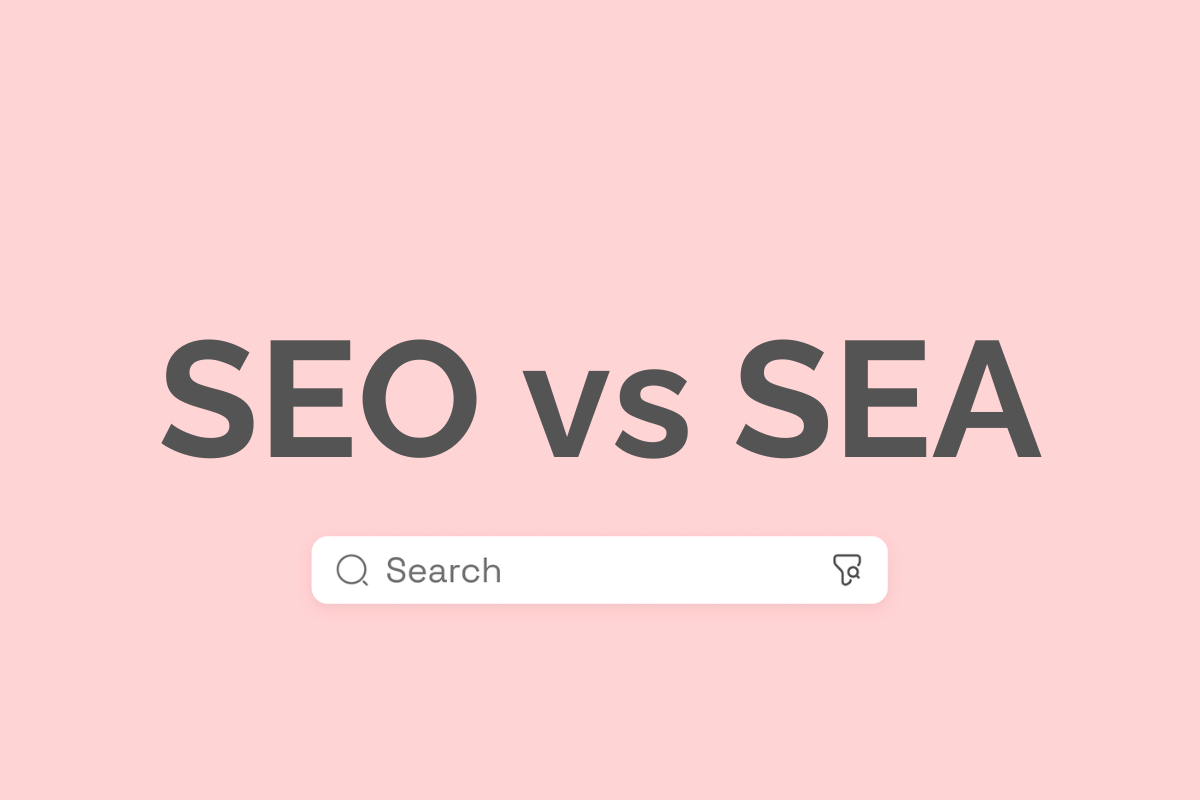SEO vs SEA in Digital Marketing
The main difference between SEO and SEA is that SEA is paid search engine advertising, while SEO concerns the organic search results and therefore does not require a budget to be visible in.
SEO and SEA are two terms that are often used in digital marketing. In an industry where there are thousands of three-letter acronyms, it is easy to miss a few.
These are two of the most common and they also differ greatly, so I think it is good to be aware of them and to be able to separate them.
In this article, I will explain the differences between them, what each acronym means, and how they can help your business succeed online.
What is SEA in marketing?
SEA stands for "Search Engine Advertising" and relates to the paid results found in search engines, Google being the most common one. These ads typically appear at the top and/or bottom of the results page, often marked with a label like "Ad" or “Sponsored”. It's a form of Pay-Per-Click (PPC) advertising, meaning you pay each time someone clicks on your ad.
Standard SEA results found at the top of the SERP
Another form of SEA results called “Shopping Ads”
What is SEO?
SEO stands for "Search Engine Optimization" and is the process of optimizing a website to appear in organic search results. Unlike SEA, SEO does not involve a budget. You cannot simply buy your way to a higher ranking. Instead, to rank organically, you must work on the various aspects of SEO: technical SEO, on-page SEO, and off-page SEO. By doing so, you can demonstrate to Google that your website deserves to rank higher.
A few different variations of SEO results, notice that there’s no “Sponsored” label
How does SEO work?
To optimize websites for search engines, people talk about ranking factors, which are different variables that contribute to whether or not you are visible in the SERP (search results). No one but Google itself knows exactly what controls this and to what extent each ranking factor contributes.
SEO is now such an established industry, with the industry valued at USD 68.1 billion in 2022, that we have come a long way in forming an understanding of this.
However, the SEO industry has developed a good understanding of the most important ranking factors through research and experimentation. According to SEMrush, the top 5 ranking factors in 2024 are:
Text relevancy
The URLs organic traffic
The domains organic traffic
Number of organic positions in top 20
How often a domain is shown with star ratings
Should you work with SEO or SEA?
The truth is that both channels have their own advantages and disadvantages. It is rarely a question of choosing either one or the other, but rather of taking advantage of the strengths of both strategies to maximize online visibility.
In most cases, it is recommended to integrate both SEO and SEA into the digital marketing strategy, but the decision may vary depending on the company's resources and overall goals.
Advantages of SEA
Immediate visibility: Provides quick results and you have control over your visibility as long as you are willing to pay for it.
Clearly measurable results: Since your campaigns are directly linked to an advertising cost, it is easier to measure ROI or "Return on Investment" than with SEO. These figures can also be measured with SEO but will not be served on a silver platter like with SEA.
Targeted advertising: Allows targeted advertising based on audience, location, and search terms, etc.
Disadvantages of SEA
Costs: Involves direct advertising costs that can be challenging for some businesses. This is especially true in -competetive B2B-niches where CPC prices can skyrocket. A B2B SEO strategy will in those cases be critical to remain profitable.
Temporary results: Visibility depends on continuous investment and can be seen as a short-term strategy if not combined with other channels.
Variation in click prices: The price per click is directly linked to bidding with other players in the market. If you are unlucky with your competitors or just find yourself in a competitive niche, it can be costly.
Advantages of SEO
Cost-effectiveness: The obvious thing is that traffic is not driven by how much you are willing to open your wallet. Of course, there are still costs involved, such as labor, but it is, if done right, a more cost-effective investment than SEA.
Long-term strategy: Once you have worked your way up to a position in the SERP, you can maintain it for months or in some cases years without any ongoing optimization. This is not something I recommend, a website benefits from ongoing SEO work, but it still shows a clear difference.
Credibility: Organic results are often considered more reliable and credible by users. This becomes very clear when you look at the CTR (Click Through Rate) of each search type, the first organic result has almost 20 times higher CTR than the first ad.
Disadvantages of SEO
Time-consuming: It takes time to see significant results and requires patience and consistent work. That's why I advocate for an approach where both SEA and SEO are part of your marketing mix.
Unpredictable: Search engines regularly update their algorithms, which affects which results are shown. A first-place ranking one day can be on page 10 the next day. This is one of many reasons why companies should work on SEO continuously rather than in scattered efforts.
No guaranteed results: SEO offers no guarantee of specific results or positions in the search results. If Google believes your page doesn't belong on page 1, it doesn't matter how much money you throw at them!
Summary
SEO or "Search Engine Optimization" is the organic results and has a significantly higher CTR than the paid ones. To be visible here, SEOs work with on-page, off-page and technical SEO to prove to Google that their page deserves a good ranking.
SEA or "Search Engine Advertising" are paid results and often displayed at the top of the search results surrounded by "sponsored". These placements uses a PPC cost model and are directly linked to the advertiser's budget.
Both marketing channels have their place in an overall strategy and one does not exclude the other, rather there are synergies in working with both. For example, SEA is a good way to test new keywords to quickly get data and see how the traffic that came in performed. If it has proven to be profitable, you can then develop an SEO strategy to get coverage on the keyword and work your way up the SERP in the long term so that you are not dependent on the continuous investment that SEA requires.
The SERP looks differently depending on the query but this is an example for the search “social media marketing”

 Connect on Linkedin
Connect on Linkedin





